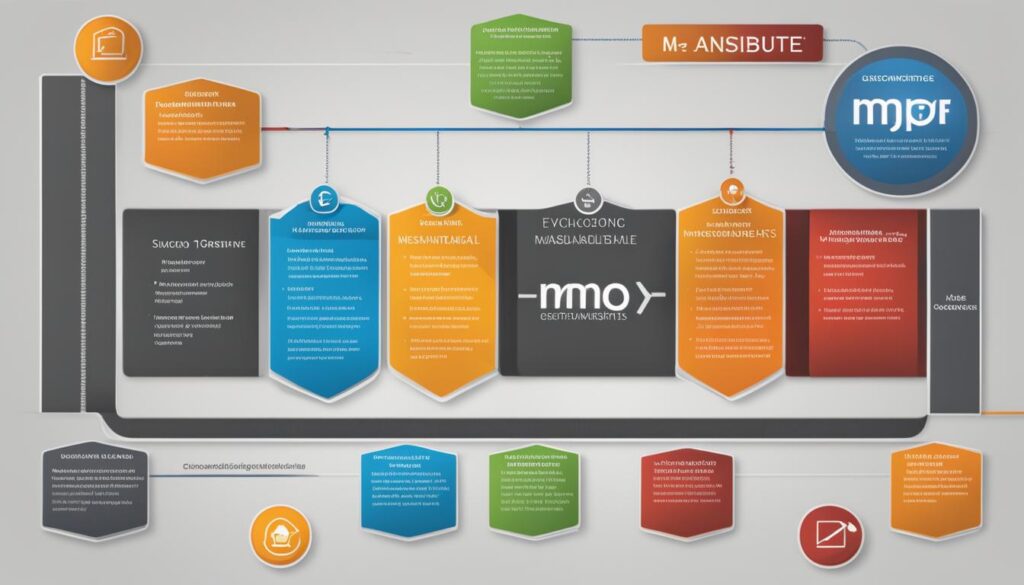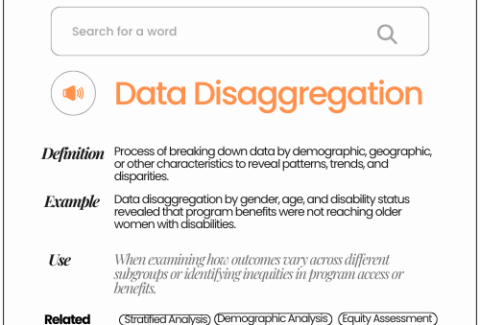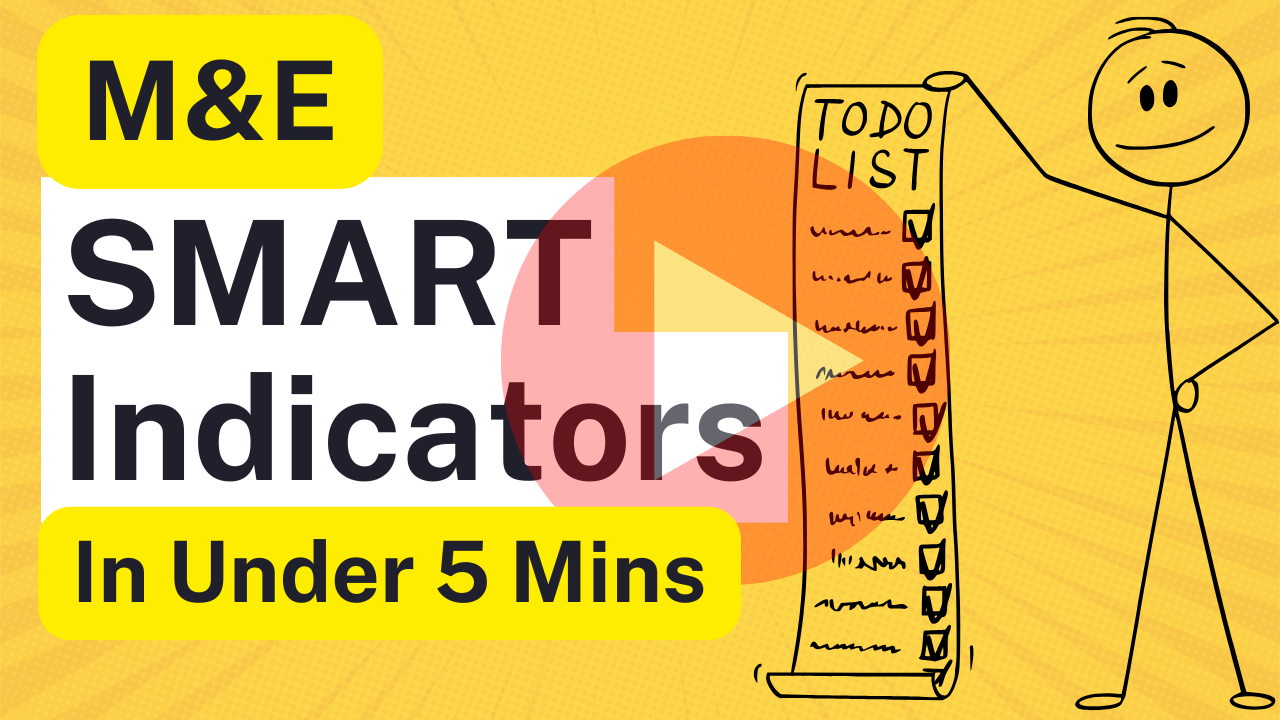How to Set M&E Objectives
December 19, 2023 2023-12-19 11:46How to Set M&E Objectives
As a project manager, setting clear and measurable objectives is essential for tracking your project’s progress and achieving its goals. Monitoring and evaluation (M&E) objectives can help make this process manageable and effective, allowing you to collect data and insights to support decision-making and optimize performance.
In this section, we’ll explore the fundamentals of setting M&E objectives and how to align them with your project’s goals to track and achieve success.
Key Takeaways
- M&E objectives can help track and achieve project goals.
- Clear and specific objectives are essential for effective monitoring and evaluation.
- The SMART criteria can be useful for creating objectives that are focused, realistic, and measurable.
- Engaging stakeholders in the objective-setting process is essential for ensuring buy-in and support.
- Regularly reviewing and adjusting objectives maximizes their effectiveness and relevance.
Understand Project Goals and Context
Before setting M&E objectives, gaining clarity on project goals and context is crucial for effective project tracking. A clear understanding of project goals can ensure the indicators set are relevant and meaningful. Similarly, accounting for the context in which the project operates can help identify potential challenges and opportunities. Consider the following steps to understand project goals and context:
- Start by reviewing any available project documentation, such as the project proposal and needs assessment report.
- Schedule meetings with project stakeholders, including the project team, partners, and beneficiaries, to gain insights into their perspectives, goals, and expectations for the project.
- Conduct a SWOT analysis to identify the project’s strengths, weaknesses, opportunities, and threats.
- Assess the external environment by analyzing factors such as political, economic, social, and technological trends that may impact the project’s success.
By following these steps, you can gain a comprehensive understanding of the project’s goals and context, which can help you set relevant and achievable M&E objectives, design appropriate indicators, and establish realistic baselines.
Define Clear, Specific Objectives
Clear and specific objectives are key to effective monitoring and evaluation. Defining precise goals makes it easier to measure progress and assess project success. Here are some tips:>
- Identify the specific results you want to achieve;
- Make your objectives measurable, so you can track progress and identify any performance gaps;
- Ensure that your goals are achievable, relevant, and aligned with your project’s vision and mission;
- Set a deadline for each objective to establish a timeframe for completion.
By following these tips, you’ll be able to define objectives that are measurable and achievable, ultimately improving your project’s success.
Examples of Clear, Specific Objectives
| Unclear Objective | Clear and Specific Objective |
|---|---|
| To increase sales | To increase sales by 10% within the next six months by expanding our customer base and launching a new marketing campaign. |
| To improve customer satisfaction | To achieve a customer satisfaction rating of 90% by the end of the year by implementing a customer feedback system and addressing the identified issues. |
| To enhance employee performance | To increase employee productivity by 15% by offering additional training programs, setting clear performance goals and providing regular feedback. |
“Clear objectives help you to focus, prioritize, and track your progress towards achieving your goals”
Use SMART Criteria
Setting clear, measurable objectives is essential for effective monitoring and evaluation. Applying the SMART criteria is a helpful technique to ensure that your objectives are Specific, Measurable, Achievable, Relevant, and Time-bound.
Specific: your objectives should be clear and unambiguous, answering the questions: What do you want to accomplish? Why is it important? Who is involved?
Measurable: your objectives should be quantifiable, allowing you to track progress and determine success. Consider using numbers or percentages to establish measurable targets.
Achievable: your objectives should be realistic and attainable, given your available resources and capacity.
Relevant: your objectives should be aligned with your project’s goals and strategies, contributing to its overall success.
Time-bound: your objectives should have a clear deadline for accomplishment, which motivates action and provides accountability.
Using SMART criteria enables you to create objectives that are focused, realistic, and measurable. For example, instead of setting a general objective like “Reduce material costs,” a SMART objective would say, “Reduce material costs by 10% within six months by sourcing raw materials from local suppliers.”
“Using SMART criteria enables you to create objectives that are focused, realistic, and measurable.”
Engage Stakeholders
Successful M&E requires the engagement of stakeholders from start to finish. Involving stakeholders in setting M&E objectives is crucial for ensuring their buy-in and support in the project.
There are various strategies you can use to engage stakeholders in the process, such as:
- Hold meetings with stakeholders at the planning stage of the project to gather their input on objectives and indicators.
- Involve stakeholders in the review and adjustment of objectives to ensure they remain relevant and aligned with project needs.
- Provide regular updates and progress reports to stakeholders to keep them informed about project performance.
Engaging stakeholders in the goal-setting process has numerous benefits, including:
- Improved project success rates and outcomes
- Increased stakeholder ownership and accountability
- Enhanced collaboration and partnerships among stakeholders
Ultimately, involving stakeholders in the M&E process increases the likelihood of project success. By implementing effective strategies to engage stakeholders, you can ensure their support and commitment to the project’s objectives.
Establish Baselines
Setting baselines is crucial to monitor any project’s progress and evaluate its success. A baseline is a reference point that allows you to establish the starting point of your project performance. By doing so, you can develop benchmarks that will define your project’s performance for the future.
Therefore, establishing a baseline is a critical step, as it helps you get a complete overview of where your project stands at a given point in time. For instance, if your project involves building a website, you can establish baselines related to visitor traffic, conversion rates, and search engine ranking positions (SERPs). These baselines will provide you with a starting point and help you track your project’s progress towards achieving its objectives.
The process of establishing baselines includes gathering information about your project’s performance history and benchmarking it against industry standards. It is essential to determine which parameters you want to measure and how, as this will define the success criteria of your project.
Once you have gathered relevant data, you can set specific goals to improve project performance. If you have a clear baseline, it will be easier to determine whether or not your project is on track to achieving its objectives and whether any adjustments need to be made.
Example of Baseline Determination for a Social Media Campaign
| Baseline Metrics | Jan 1 | Feb 1 | Mar 1 |
|---|---|---|---|
| Metrics 1 | 1,000 | 1,200 | 1,500 |
| Metrics 2 | 500 | 600 | 800 |
| Metrics 3 | 200 | 250 | 300 |
The table above shows a sample baseline metric for a social media campaign, where Metrics 1 represents the number of followers, Metrics 2 represents the number of reactions per post, and Metrics 3 represents the number of shares per post. These metrics will be helpful in establishing performance benchmarks, tracking progress, and making informed decisions to improve performance.
Develop Indicators
Indicators are key to measuring your project’s progress and determining whether it’s on track to achieving its objectives. When developing indicators, it’s crucial to keep in mind that they should align with your project’s objectives and provide meaningful data that can be used to make informed decisions.
One approach you can use is to identify a set of key performance indicators (KPIs) that are most relevant to your project. These KPIs should be specific, measurable, achievable, relevant, and time-bound. Once you have identified your KPIs, you can track and measure them over time to monitor your project’s progress.
Another approach is to develop a set of output and outcome indicators that capture the outputs and outcomes of your project in a systematic and standardized way. Output indicators measure the activities and products of your project, while outcome indicators measure the impact and changes your project brings about.
To ensure that your indicators are accurate and relevant, it’s important to involve key stakeholders in their development. This will help ensure that the indicators capture the full range of your project’s activities and impact.

Example of a Table of Indicators
| Indicator | Description | Target | Baseline | Source of Data |
|---|---|---|---|---|
| Number of participants | The number of people who participated in project activities. | 100 | 0 | Project records |
| Level of satisfaction | The level of satisfaction of participants with project activities. | 90% | 0% | Participant survey |
| Number of new partnerships | The number of new partnerships established as a result of the project. | 5 | 0 | Project records |
| Reduction in greenhouse gas emissions | The reduction in greenhouse gas emissions resulting from project activities. | 10% | 0% | Project monitoring data |
The above table shows an example of how you can structure your indicators to include a description, target, baseline, and source of data. When creating your table, ensure it’s detailed and relevant to your project’s goals and context.
Create a Monitoring Plan
Now that you have defined clear and specific objectives, it’s time to create a monitoring plan to track progress towards achieving them. A monitoring plan outlines the activities and procedures for collecting data and assessing project performance.
Start by identifying the data that needs to be collected and establish how frequently it should be collected. Determine who will collect and manage the data, and establish procedures for data entry and quality control. It’s important to involve all stakeholders in the monitoring plan to ensure buy-in and support.
Your monitoring plan should include the following:
- Objectives to be monitored
- Indicators to be measured
- Data sources and data collection methods
- Frequency of data collection
- Data management and reporting procedures
Use a table to clearly outline each of these components for easy reference and clarity. Here’s an example:
| Objectives to be Monitored | Indicators to be Measured | Data Sources and Collection Methods | Frequency of Data Collection | Data Management and Reporting Procedures |
|---|---|---|---|---|
| Lorem ipsum dolor sit amet, consectetur adipiscing elit | Indicator 1, Indicator 2, Indicator 3 | Data Source 1, Data Source 2 | Weekly | Data will be entered into a spreadsheet and reviewed by project manager weekly |
| Lorem ipsum dolor sit amet, consectetur adipiscing elit | Indicator 4, Indicator 5, Indicator 6 | Data Source 3, Data Source 4 | Monthly | Data will be entered into a database and reviewed by project manager monthly |
Regularly review and adjust your monitoring plan as needed to ensure that it aligns with your objectives and project needs. With an effective monitoring plan in place, you can track progress towards achieving your objectives and make informed decisions for continuous improvement.
Review and Adjust Objectives
Regularly reviewing and adjusting objectives is an essential part of effective monitoring and evaluation. As your project progresses and circumstances change, it’s crucial to ensure that your objectives remain relevant and aligned with your evolving needs. Failure to review and adjust your objectives may result in inaccurate data, unrealistic expectations, and wasted resources.
To review and adjust your objectives:
- Set a timeline: Plan regular intervals (e.g., quarterly, annually) to review and adjust objectives.
- Evaluate progress: Use reliable data to assess your project’s performance and progress towards each objective.
- Identify gaps: Identify discrepancies between expected and actual outcomes and determine the underlying reasons for the gaps.
- Modify objectives: Based on the evaluation and analysis, modify objectives by revising their scope, adding or removing certain components, or changing their timeline.
- Align with stakeholders: Consult with stakeholders to ensure that their priorities and needs remain aligned with the project objectives.
By reviewing and adjusting your objectives periodically, you can ensure that your project stays on track and meets its intended goals. However, keep in mind that any adjustments should be made carefully and judiciously to avoid unnecessary disruptions to existing processes.
Example of Objectives Review Table
Here is an example of a table that can be used to review objectives:
| Objective | Indicator | Baseline | Current Outcomes | Recommendation |
|---|---|---|---|---|
| Increase customer satisfaction | Customer feedback survey score | 80% | 75% | Review questions on survey and seek additional customer feedback |
| Streamline production process | Time to produce one unit | 5 minutes | 6 minutes | Retrain production staff and analyze workflow improvements |
| Expand market share | Sales revenue | $1 million | $800,000 | Develop and implement new marketing strategy |
Conclusion
Now that you have learned how to set M&E objectives effectively, it’s time to implement and track progress towards achieving them. By regularly monitoring project performance, you can identify areas of improvement and take corrective actions to stay on track.
Evaluation and reporting are crucial components of the monitoring and evaluation process. By evaluating the results, you can assess the impact of your project, identify what worked well, and what needs to be improved. Reporting findings to stakeholders is essential for transparency and accountability.
Remember to regularly review and adjust objectives to align them with your project’s evolving needs. By doing so, you can ensure that your M&E objectives remain relevant and effective in achieving project goals.
By implementing these steps, you can maximize the effectiveness of your M&E objectives and ensure project success. So, start implementing and tracking progress, evaluating and reporting, and taking corrective actions to achieve your project goals.
FAQ
How can setting M&E objectives help me track and achieve project goals?
Setting M&E objectives provides a clear roadmap for monitoring and evaluating your project’s progress towards its goals. It enables you to establish specific targets, track performance, and make data-driven decisions to ensure project success.
How can I gain a better understanding of my project goals and context?
To understand your project goals and context, you need to conduct a thorough assessment of your project’s scope, purpose, and target audience. It involves reviewing project documents, conducting stakeholder interviews, and analyzing the external environment to gain clarity on the project’s purpose and expected outcomes.
How can I define clear and specific objectives for my project?
Defining clear and specific objectives involves articulating what you want to achieve, who will be responsible, when it will be accomplished, and how success will be measured. By ensuring that your objectives are precise, measurable, achievable, relevant, and time-bound (SMART), you can effectively track and evaluate progress.
What is the significance of using SMART criteria for setting objectives?
Using SMART criteria ensures that your objectives are realistic and focused. The SMART criteria help in making objectives measurable, actionable, and aligned with your project’s goals. By applying SMART criteria, you can create objectives that are more likely to be achieved and facilitate effective monitoring and evaluation.
Why is it important to engage stakeholders in setting M&E objectives?
Engaging stakeholders in setting M&E objectives helps create shared ownership and commitment towards project success. Stakeholders’ involvement ensures that objectives reflect their perspectives and needs, which leads to better project alignment and increased chances of achieving desired outcomes.
How do I establish baselines for my project?
To establish baselines, you need to collect and analyze relevant data before implementing your project. Baselines provide a benchmark against which you can measure progress and determine the impact of your interventions. By understanding the starting point, you can better assess how far you have come and the effectiveness of your project activities.
What are indicators, and how can I develop them?
Indicators are measurable parameters that help track progress towards achieving objectives. To develop indicators, you need to identify key dimensions of your objectives and determine the specific measurements that indicate progress or success. It is important to select indicators that are practical, reliable, and valid, providing meaningful data for monitoring and evaluation.
How can I create an effective monitoring plan for my project?
Creating a monitoring plan involves identifying the data collection methods, tools, and frequency of monitoring activities. It helps ensure systematic data collection and analysis to track project performance. By considering the project’s objectives, available resources, and needs of stakeholders, you can develop a monitoring plan that aligns with your project’s goals.
Why is it essential to review and adjust objectives periodically?
Regularly reviewing and adjusting objectives allows you to respond to changes in project context, priorities, and stakeholder needs. By evaluating the effectiveness and relevance of objectives, you can make necessary modifications to keep them aligned with your project’s evolving requirements, increasing the likelihood of achieving desired outcomes.
What steps can I take to implement and track progress, evaluate results, and report findings?
Once you have set your objectives, implementing and tracking progress involves collecting and analyzing data, measuring against indicators, and making necessary adjustments. Evaluating results entails assessing the overall project performance and comparing it to the set objectives. Reporting findings involves communicating evaluation results to stakeholders, sharing insights, and making recommendations for improvement.












